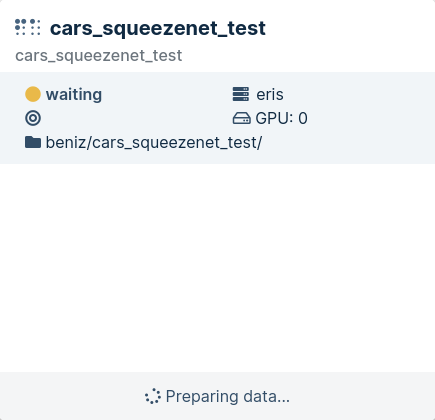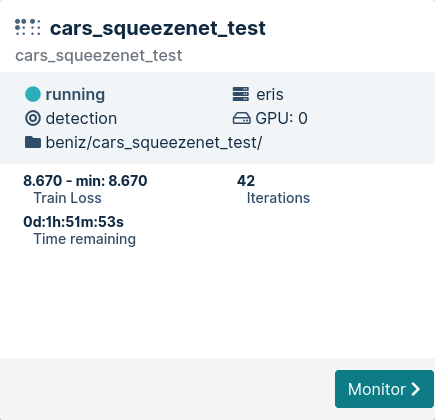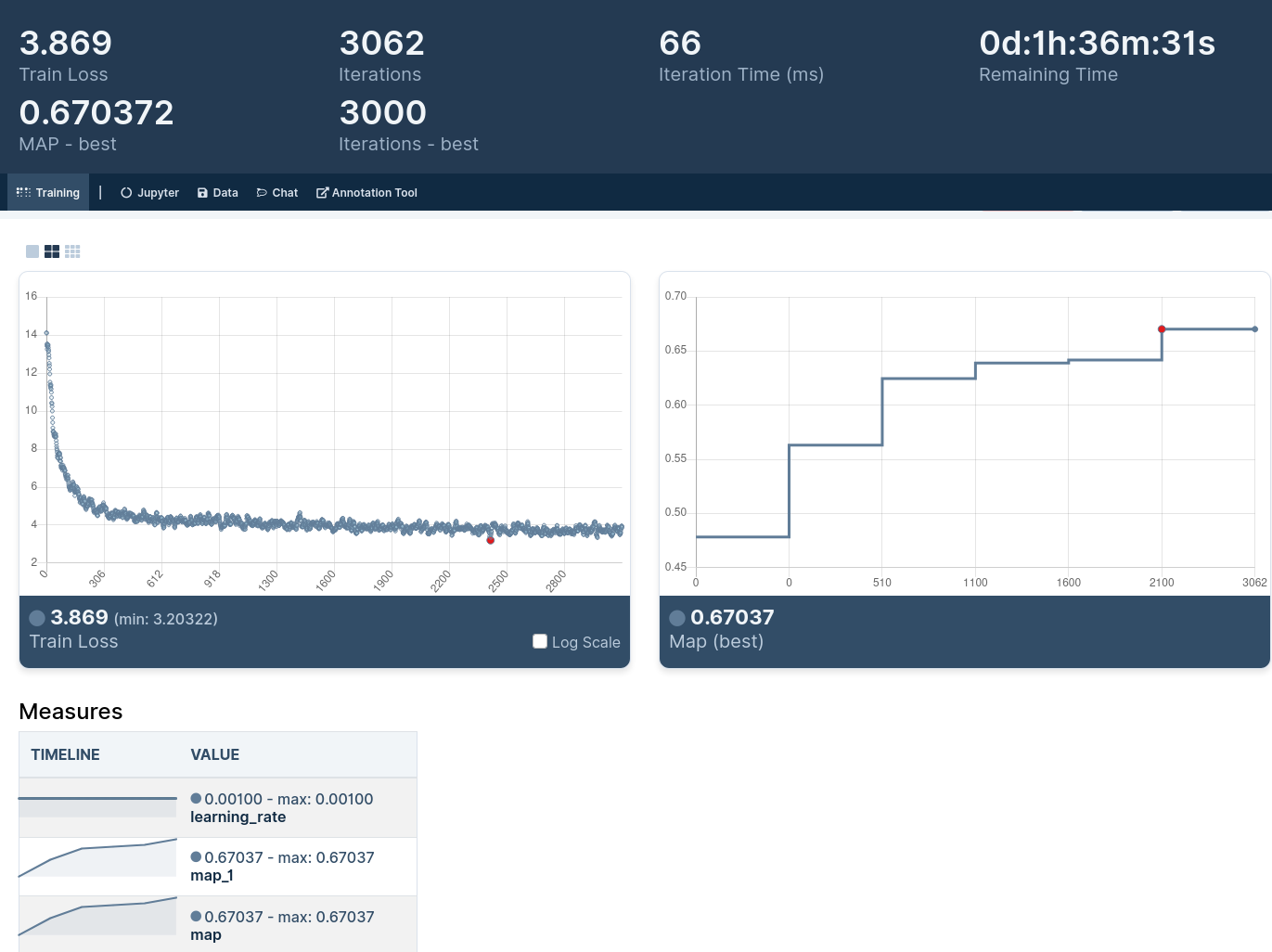This post describes how we quickly train object detectors at Jolibrain. As a tutorial we train a car detector from road video frames using the DeepDetect Platform that is a Web UI on top of the DeepDetect Server. All our products are Open Source.
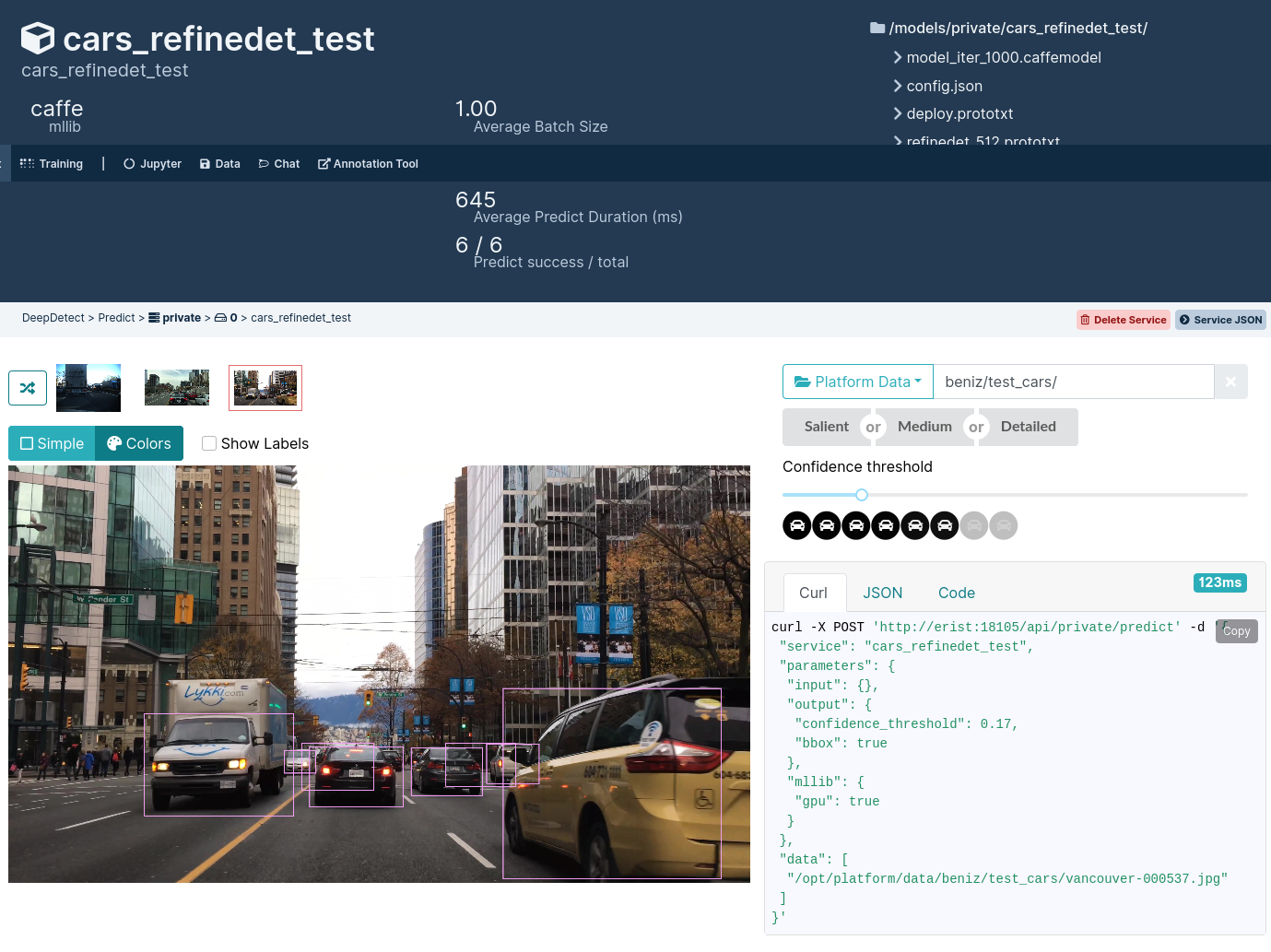
At Jolibrain we are specialized in hard deep learning topics, i.e. for which no on-the-shelf product does yet exist. Everything else we automate and put into DeepDetect Server and Platform.
We’ve automated standard object detection a while ago. This is because detection is often the first step of automating a project in industry. Once the elements of interest have been localized in an image for instance, some more complex models can apply.
We use the DeepDetect Platform on a daily basis to train object detectors. It’s entirely Open Source, see how to install it.
Training object detectors with the platform is made extremely quick & easy with the following features:
- Short & simple Jupyter notebook that contains everything, no code needed
- Very simple object detection dataset format
- Internal dataset checks + visual inspection within the notebook
- Neural model change with a single string, no code needed
- Automated data augmentation
- Web UI for model monitoring and archiving
- Integrated live training metrics
- Model archiving with metrics
- Model comparison built into the Web UI
- Model publishing for inference
Below we detail the three steps to train an object detector, it should take 5 minutes overall, and training lasts 30 minutes on a standard GPU for an early model.
Model setup
From the DeepDetect Platform, open up the Jupyter notebook, the object detector template is pretty simple.
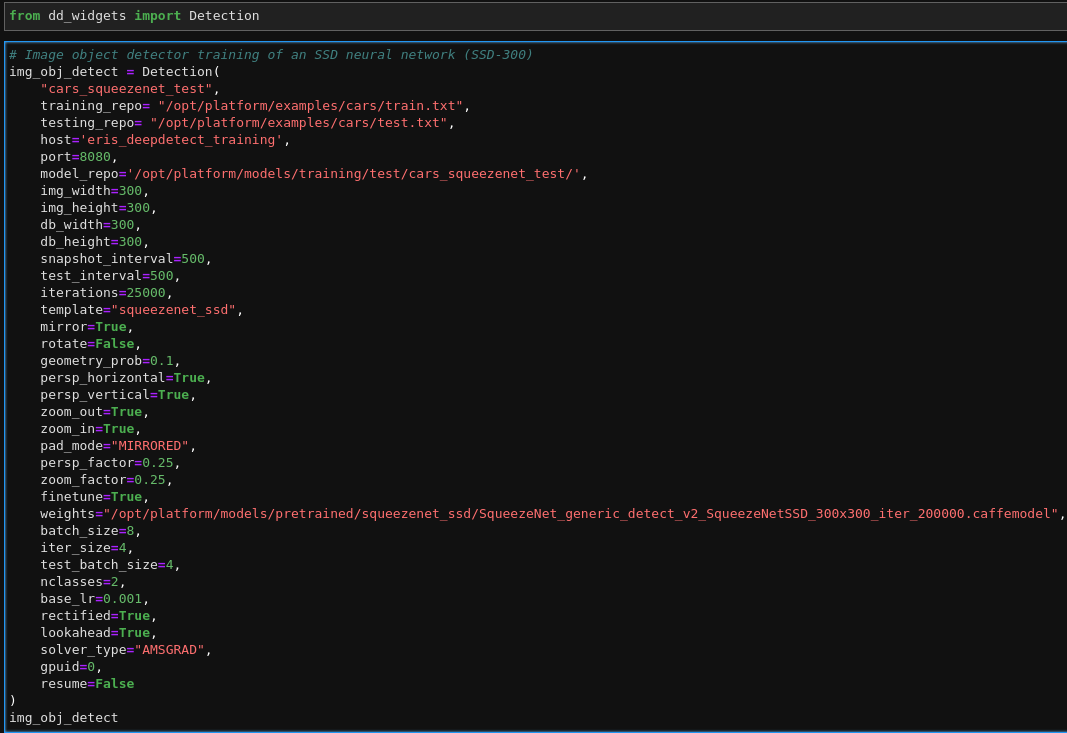
This template has preset values for a range of parameters. There are good as is for a first shot with very decent results and quick training time.
Note that advanced data augmentation, including pespective deformation and noise are included, and that the system uses an advanced optimizer named AMSGRAD with both lookahead and rectified options activated. This smoothes training and yields very good results quickly.
The notebook is available from the DeepDetect Platform directly and as part of our notebook examples on Github.
For an improved model, more computational model, two changes can be made:
- change
squeezenet_ssdforrefinedet_512 - set
img_widthandimg_heightto 512 anddb_width,db_heightto 1024.
Dataset review
Executing the notebook runs a background check on the dataset, and provides a way to visually inspect the dataset before training as well.
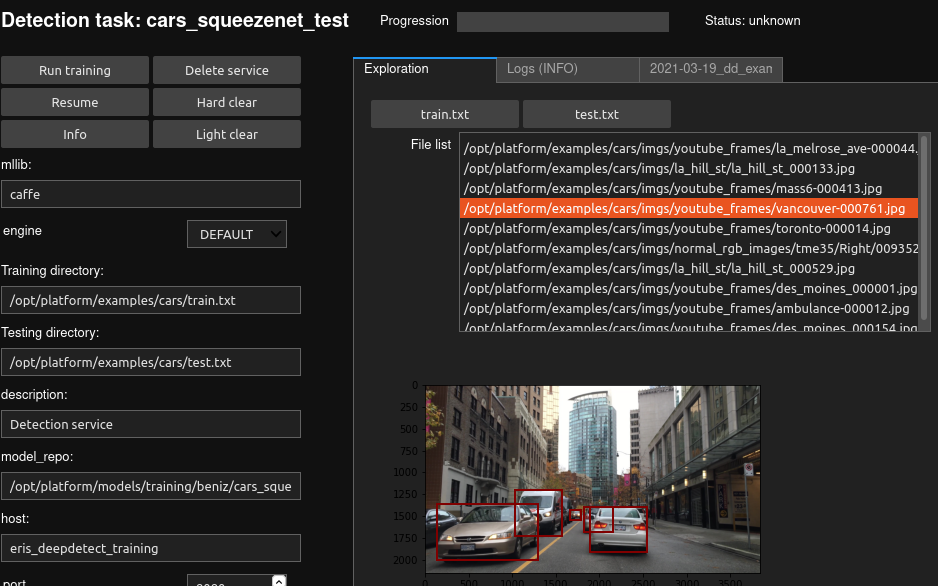
The task at hands is on the road car detection, see a few samples below:
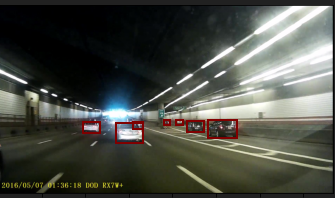
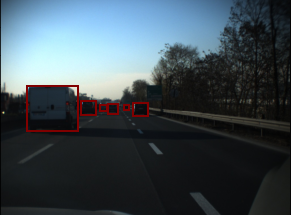
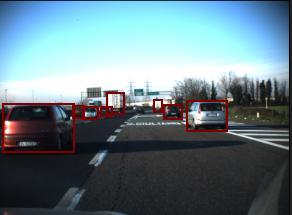
Training
Model training can start by clicking the Run training button in the notebook.
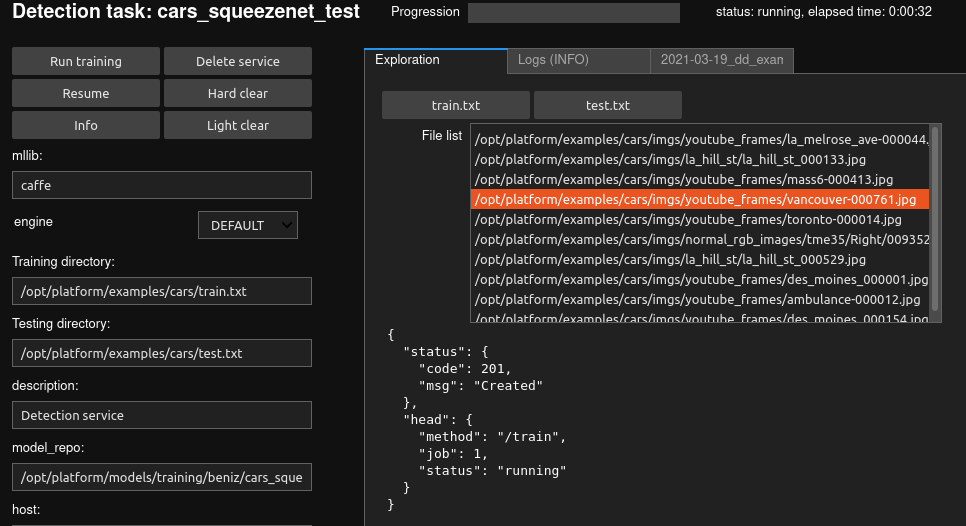
The model then prepares for training, and can be monitored from the Web UI. Once ready, the GPU is put to work and the training begins.
